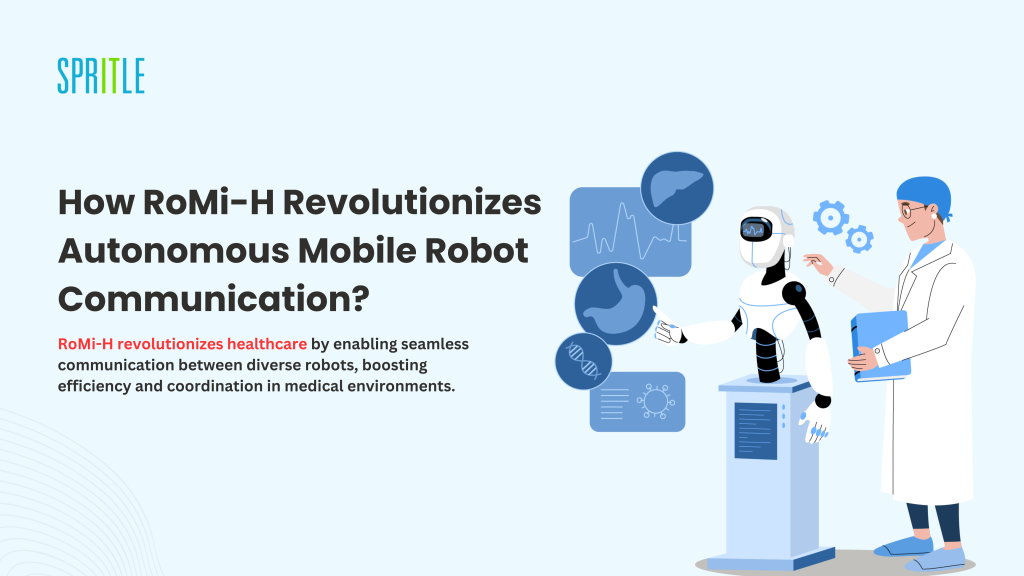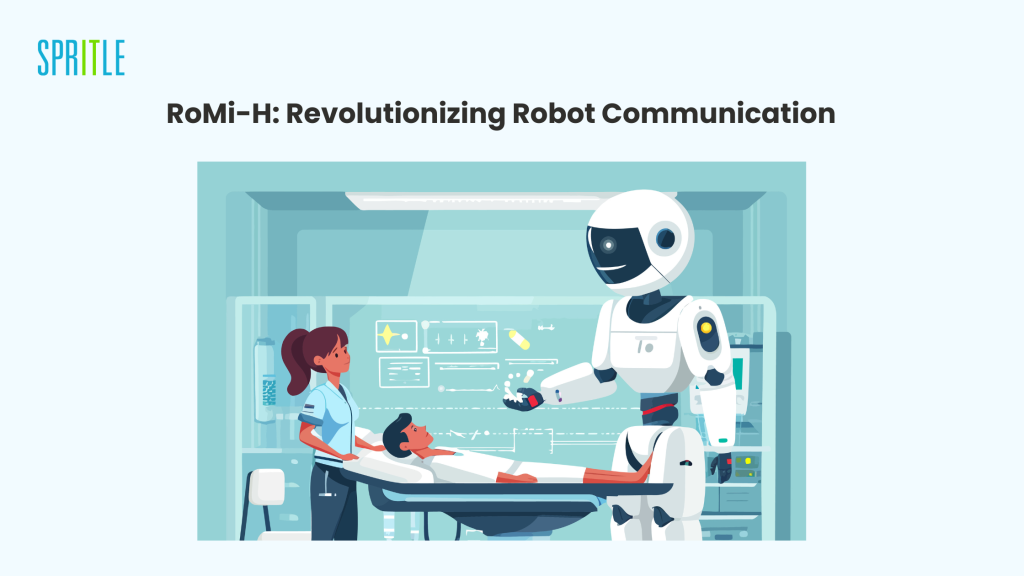
Introduction
Robotics Middleware for Healthcare (RoMi-H) is an open-source framework that makes it easier for different robotic systems and healthcare infrastructure to work together. Launched in July 2018, it’s led by Singapore’s Centre for Healthcare Assistive and Robotics Technology (CHART) with help from partners like IHiS and GovTech. The goal of RoMi-H is to improve communication and coordination between various robotic platforms, sensors, and hospital systems, ultimately boosting efficiency in healthcare settings.
Why RoMi-H was introduced?
The development of RoMi-H was motivated by the increasing adoption of robotic technologies in healthcare, particularly during the COVID-19 pandemic. As hospitals began utilizing more service robots for various tasks, the need for a unified communication system became apparent. RoMi-H addresses this challenge by providing a robust platform that encourages collaboration among different robotic systems, ultimately aiming to digitize and enhance healthcare delivery.
Purpose and Key Features Driving Innovation
- Interoperability: It allows robots from different vendors to communicate effectively, enabling coordinated operations such as shared use of elevators and other infrastructure. This is essential in environments where multiple robotic systems are deployed for tasks like medication delivery and patient transport.
- Standardized Communication: The framework provides a common communication platform using standard message formats and protocols, making it easier for different systems to connect and work together. This simplifies integrating new technologies into existing healthcare setups.
- Multi-Fleet Coordination: ROMI-H helps manage multiple groups of robots, allowing for flexible task assignments and better use of resources within hospitals. This helps optimize workflows and reduce delays in patient care.
- Simulation Tools: The framework includes virtual simulation features that let institutions model and predict traffic patterns for robots before they are implemented. This helps with planning expansions and testing integrations without disrupting current operations.

Applications in Healthcare
RoMi-H has been deployed in various healthcare settings, including Changi General Hospital in Singapore, where it has been instrumental in improving the efficiency of hospital logistics. By enabling robots to communicate and collaborate, RoMi-H enhances the overall workflow, allowing healthcare professionals to focus more on patient care rather than logistical challenges.
Key Components
- RoMi-H Core
- Acts as the central hub for communication among all robotic systems.
- Manages data routing and message exchanges using a publish-subscribe pattern, allowing different robots to share information without direct connections.
- Robotic Systems
- Various types of robots (delivery robots, and cleaning robots) operate within the healthcare facility. Each robot can be from different vendors, ensuring a heterogeneous fleet.
- Infrastructure Interfaces
- Interfaces with building management systems, including elevators, doors, and safety systems, enabling robots to interact with the physical environment.
- User Interfaces
- Provides interfaces for healthcare staff to monitor and control robotic operations. This includes dashboards and control panels that display real-time data and alerts.
- Simulation Tools
- Tools for modeling and simulating robot movements and interactions within the facility, helping to optimize traffic flow and resource allocation.
- Standardized Message Libraries
- Libraries that define common communication protocols and message formats, ensure that all systems can understand and respond to each other’s messages.
Data Flow
- Robots publish their status and operational data to the RoMi-H Core.
- Other systems (robots, infrastructure, user interfaces) subscribe to relevant messages, allowing them to react accordingly.
- When a robot needs to access infrastructure (like opening a door), it sends a request to the RoMi-H Core, which translates this into a compatible message for the infrastructure system.
- The RoMi-H Core continuously monitors the status of all robots, ensuring that they operate efficiently and can respond to any emergencies or changes in the environment.
- The system coordinates multiple fleets of robots, ensuring that they can share resources like elevators and pathways without collisions or delays.
Architecture Diagram
Conclusion
RoMi-H is a big step forward in bringing robotics into healthcare, making everything run smoother and more collaboratively. With its standardized communication framework, RoMi-H lets different robotic systems work together effortlessly, boosting efficiency and improving patient care.
Looking ahead, the possibilities with RoMi-H are huge. As technology advances, RoMi-H could incorporate things like AI for predictive analytics, machine learning for smarter decision-making, and better user interfaces for smoother human-robot interaction. Since it’s open-source, there’s plenty of room for ongoing development and innovation, with researchers and developers continuously enhancing the framework.
